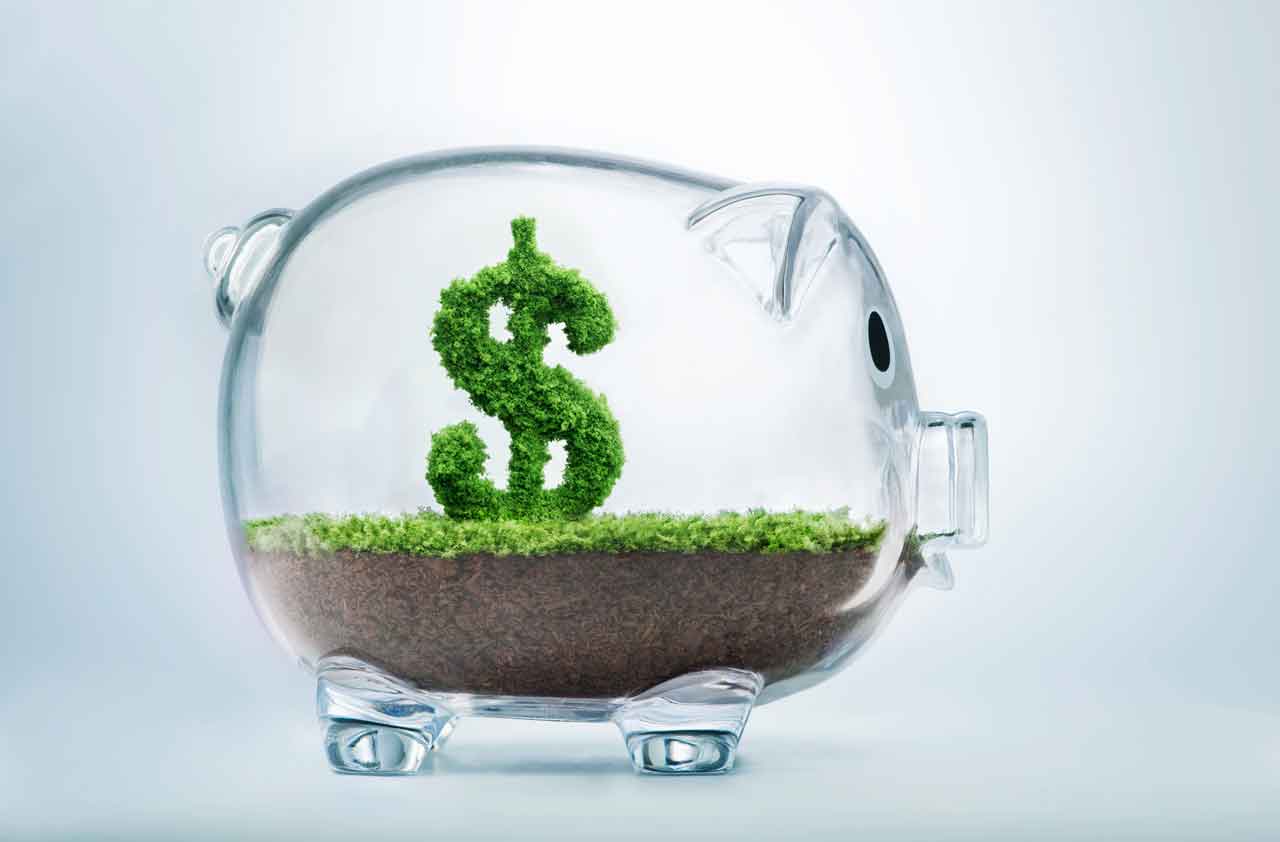Better Rates for Savers, Finally
Ultra-short-term bond funds yield more than cash, and their prices are unlikely to fall much as interest rates increase.


Goose eggs begone. Whether you save at the bank or park substantial sums in a money market fund at your brokerage between transactions, you no longer have to settle for zero interest. Today, an FDIC-insured savings account at an online bank pays as much as 1.25%. That’s the base rate for earning a risk-free return. To bend a phrase, cash now pays enough to say that all your dollars matter. Moreover, the “opportunity cost,” or forgone income, for settling for next to nothing in a checking account or brokerage cash drawer is rising.
The spark for the recent rise in yields is the Federal Reserve’s decision to move away from an extraordinarily easy monetary policy and steadily raise the federal funds rate, a key short-term benchmark. Some yields, such as those for one-year and two-year Treasury notes, have already more than doubled since last summer. As a result, many banks that had been stubbornly clinging to near-0% rates have become more willing to compete with the Treasury and money market fund sponsors.
Stay the course. None of this is to suggest that I’m bearish on stocks or longer-term debt. The Fed’s plan to bump up overnight rates twice more this year and three times in 2018 is barely registering on long-term interest rates, which are set by investors in the bond market and continue to swing within a narrow range. The market values of my favorite types of bonds, which include triple-B-rated corporate debt, tax-exempt revenue bonds and taxable Build America municipals, remain firm.

Sign up for Kiplinger’s Free E-Newsletters
Profit and prosper with the best of expert advice on investing, taxes, retirement, personal finance and more - straight to your e-mail.
Profit and prosper with the best of expert advice - straight to your e-mail.
Dividend yields, averaging 2.0% for Standard & Poor’s 500-stock index, are still high enough to attract new money to stocks. So high-yielding shares are keepers, too.
Now, back to your cash. Besides online bank accounts, the following are safe and liquid repositories. I suggest funds for convenience, but individual bonds maturing in two years or so offer good value. Even if rates rise and prices dip a hair, you’ll get back face value at maturity. Then you can roll the proceeds into higher-paying bonds.
Tax-free money market funds. Local governments borrow from banks or sell the equivalent of Treasury bills to meet their short-term needs, and the Fed influences these rates. Such ace funds as Northern Municipal Money Market (symbol NOMXX) and Vanguard Municipal Money Market (VMSXX) have gone from paying nothing last year to paying about 0.64% today. And their monthly distributions are rising. If you are in the top, 43.4% federal tax bracket, a tax-free 0.75% is equivalent to 1.3% from a taxable fund. (Yields are as of March 31.)
Ultra-short-term bond funds. These funds’ holdings typically have average maturities of about one year, making them nearly impervious to rising rates. USAA Ultra Short-Term (UUSTX, yield 1.3%) tends to yield more than its peers, but the monthly income for all funds in this category should grow as they replace holdings with higher-yielding debt.
Short-term corporate bonds. With slightly longer maturities than ultra-short-term products, these funds carry a bit more interest-rate risk but also yield more. You need not look beyond Kiplinger 25 member Vanguard Short-Term Investment-Grade (VFSTX, 2.0%), whose holdings have an average maturity of 3.3 years.
Floating-rate bank-loan funds. I wrote about these funds in the December 2016 issue, and they’re also featured prominently in 29 Ways to Earn 1% - 10% on Your Money in 2017. My favorite is still Fidelity Floating Rate High Income (FFRHX, 3.0%). The bank loans it holds usually have below-investment-grade ratings, so you can’t precisely call such a fund a cash instrument. But the fund carries almost no rate risk, and you can sell it as easily as you can any other mutual fund.
Get Kiplinger Today newsletter — free
Profit and prosper with the best of Kiplinger's advice on investing, taxes, retirement, personal finance and much more. Delivered daily. Enter your email in the box and click Sign Me Up.

-
 This One Area of Americans' Retirement Readiness Gets a Bad Grade
This One Area of Americans' Retirement Readiness Gets a Bad GradeMillions of Americans score poorly on retirement readiness due to this Achilles' heel. Are you prepared?
By Christy Bieber Published
-
 REAL ID Deadline: What You Need by May 7, 2025
REAL ID Deadline: What You Need by May 7, 2025Worried about needing a REAL ID soon? Learn more about the requirement, how to get your ID and valid REAL ID alternatives.
By Laura Gariepy Published
-
 Dividends Are in a Rut
Dividends Are in a RutDividends may be going through a rough patch, but income investors should exercise patience.
By Jeffrey R. Kosnett Published
-
 Why Investors Needn't Worry About U.S. Credit Downgrade
Why Investors Needn't Worry About U.S. Credit DowngradeFitch Ratings The United States saw its credit rating downgraded for just the second time in history, but experts aren't worried about the long-term damage to stocks.
By Dan Burrows Published
-
 Municipal Bonds Stand Firm
Municipal Bonds Stand FirmIf you have the cash to invest, municipal bonds are a worthy alternative to CDs or Treasuries – even as they stare down credit-market Armageddon.
By Jeffrey R. Kosnett Published
-
 High Yields From High-Rate Lenders
High Yields From High-Rate LendersInvestors seeking out high yields can find them in high-rate lenders, non-bank lenders and a few financial REITs.
By Jeffrey R. Kosnett Published
-
 Time to Consider Foreign Bonds
Time to Consider Foreign BondsIn 2023, foreign bonds deserve a place on the fringes of a total-return-oriented fixed-income portfolio.
By Jeffrey R. Kosnett Published
-
 The 5 Safest Vanguard Funds to Own in a Volatile Market
The 5 Safest Vanguard Funds to Own in a Volatile Marketrecession The safest Vanguard funds can help prepare investors for continued market tumult, but without high fees.
By Kyle Woodley Last updated
-
 5 of the Best Preferred Stock ETFs for High and Stable Dividends
5 of the Best Preferred Stock ETFs for High and Stable DividendsETFs The best preferred stock ETFs allow you to reduce your risk by investing in baskets of preferred stocks.
By Kyle Woodley Last updated
-
 The Current I-Bond Rate Until May Is Mildly Attractive. Here's Why.
The Current I-Bond Rate Until May Is Mildly Attractive. Here's Why.Investing for Income The current I-bond rate is active until November 2024 and presents an attractive value, if not as attractive as in the recent past.
By David Muhlbaum Last updated